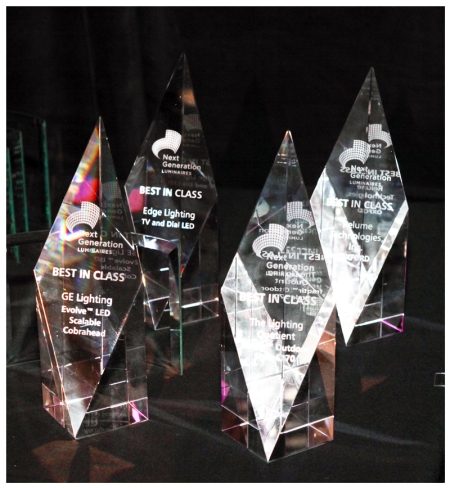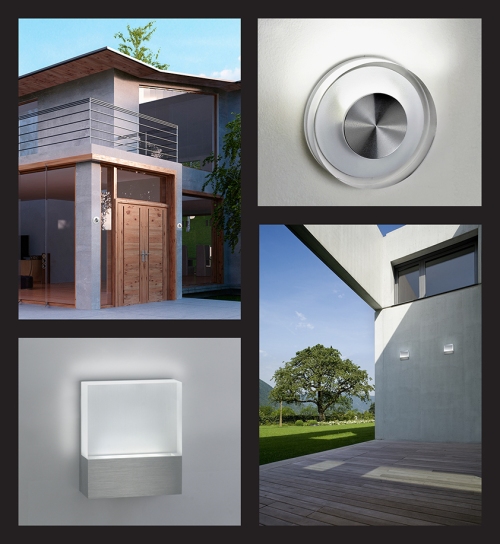Last month, Next Generation Luminaires (NGL) held an awards ceremony for the winners of its 2012 Outdoor Design Competition. Congratulations to Edge Lighting for earning the highly sought-after “Best in Class” trophy for its TV LED and Dial LED wall sconces.
 Congratulations to Edge Lighting for a stellar performance in the 2012 Next Generation Luminaires Outdoor Competition.
Congratulations to Edge Lighting for a stellar performance in the 2012 Next Generation Luminaires Outdoor Competition.
Co-created by the US Department of Energy (DOE), the annual NGL competition recognizes design and production excellence in high quality, white-light LED light fixtures available on the commercial market. Judged based on quality of light (color, consistency, distribution, and brightness), serviceability, energy efficiency, value, innovation and controllability, the winning products represent innovative, energy-efficient lighting at its finest.
Of the 176 LED products submitted to the NGL 2012 Outdoor Competition, 37 received awards as “Recognized” winners. At the judges’ discretion, only five of the 37 winning products merited the “Best in Class” distinction, reserved only for those products standing head and shoulders above the rest. Edge’s TV LED and Dial LED were two of the five.
One of three lighting manufacturers to clinch this title, Edge Lighting was the only company to earn “Best in Class” for more than one product.
Past Wins for PureEdge Lighting
Since 2009, a total of seven Edge Lighting products have earned NGL awards, including “Best in Class” for TV LED and Dial LED wall sconces, as well as four “Recognized Winner” award in previous competitions. Edge Lighting’s sister company, Pure Lighting, also earned an award in 2009 for its stunning Stratus Wall Grazer.
2009 – Stratus Wall Grazer – Pure Lighting
– Nautilus LED – Edge Lighting
2010 – Taos LED, Sun3 LED, and Port LED – Edge Lighting
2012 Indoor Competition– Soft Line Indirect LED – Edge Lighting
*There was no competition held in 2011
About NGL
Created in 2008 to “recognize and promote excellence” in LED lighting fixture design, the NGL Design Competition is organized by the U.S. Department of Energy (DOE), in partnership with the Illuminating Engineering Society of North America (IES) and the International Association of Lighting Designers (IALD).
At the time, LEDs had only recently made the commercial leap from cheap flashlights with blinding bluish light to practical, beautiful and energy efficient white-light fixtures. Those who recognized LED lighting’s huge potential (lighting industry professionals, environmentalists, etc) decided that it was time to recognize those who were turning that potential into reality.
About PureEdge Lighting
Edge Lighting and its sister company, Pure Lighting, are divisions of Chicago-based PureEdge Lighting.
Form follows function at Edge Lighting, solving basic lighting problems with technical finesse while incorporating the essential elements of contemporary, yet timeless design. Edge Lighting develops and manufactures specification grade, energy efficient fixtures that exhibit superior craftsmanship and aesthetics, while utilizing the latest in engineering technologies.
Pure Lighting combines minimalist design with state-of-the-art technology to produce innovative lighting that seamlessly blends into drywall or plaster ceilings. The revolutionary collection features “Truly Trimless” recessed fixtures, advanced LED RGB technology and concealed lighting components that provide a clean, glare-free internal look ideal for commercial or residential applications.







